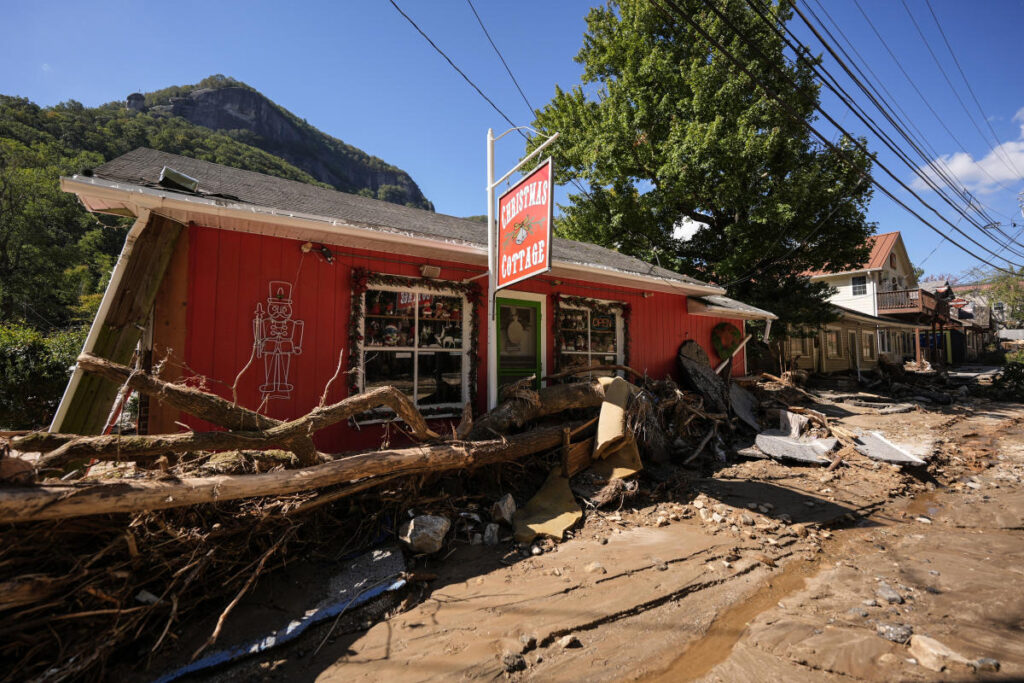The Small Business Administration (SBA) has recently announced that it has exhausted its funding for disaster assistance loans aimed at supporting small businesses, homeowners, and renters who have been affected by the devastating impacts of Hurricanes Helene and Milton. These Economic Injury Disaster Loans are particularly critical in the aftermath of natural disasters, providing vital financial relief to sustain local economies and help affected individuals regain stability. As applications for assistance surged in the wake of Hurricane Helene, which struck Florida’s Gulf Coast, the SBA had previously cautioned that funding would likely run out without new appropriations from Congress. This predicament is particularly pressing given the number of applications submitted by those impacted by these storms.
Hurricane Helene proved particularly destructive as a Category 4 hurricane, making landfall on September 26, and unleashing trillions of gallons of rain. The storm caused extensive damage across multiple states, with the SBA reporting approximately 37,000 applications for relief resulting from this disaster, in addition to 12,000 applications following Hurricane Milton’s assault. With the SBA now having to pause new loan offers until funding can be replenished, the delay leaves many in limbo as they await essential financial support. SBA Administrator Isabel Casillas Guzman encouraged applicants to continue applying, underscoring the agency’s commitment to processing applications so that aid can be distributed promptly once funds become available.
In the context of this funding crisis, House Speaker Mike Johnson has expressed confidence that adequate financial support would be made available when Congress reconvenes after the November elections, remarking on the severity of the storms and the need for immediate relief for affected communities. He has, however, resisted calls to bring lawmakers back to the Capitol for a special session to expedite the aid process, citing the need for a more accurate assessment of funding needs from the Biden-Harris Administration. Johnson assured that bipartisan support would emerge to address the funding gap, emphasizing an intention to address the situation during the upcoming congressional session.
The SBA provides two main types of disaster loans, which serve different purposes. The first type, business physical disaster loans, assists in repairing or replacing damaged property, including real estate, and essential business equipment. The second type, economic injury disaster loans, helps small businesses maintain working capital to meet financial obligations when impacted by disasters. Businesses can secure loans up to $2 million, with favorable interest rates of 4% and 3.25% for businesses and nonprofit organizations respectively. For homeowners, the SBA offers disaster loans up to $500,000 for property repairs, with renters also eligible for assistance to cover personal property damages.
Federal Emergency Management Agency (FEMA) is another key player in disaster response and has its own relief programs, independent of the SBA’s financial shortfall. The FEMA disaster relief fund is designed to facilitate immediate responses to disasters, covering a range of essential needs, including the reimbursement of local officials for debris removal and public infrastructure repairs. FEMA Administrator Deanne Criswell has noted that, while the agency has sufficient funds to respond to the disasters caused by Helene and Milton, additional appropriations from Congress will ultimately be necessary. Failure to secure such funding could force FEMA to conserve resources and halt payouts for prior disasters, redirecting efforts solely towards life-saving missions.
The ongoing need for disaster assistance in the aftermath of the hurricanes highlights the critical roles played by both the SBA and FEMA in providing financial relief and recovery assistance to affected individuals and communities. As impacted parties await further information on funding prospects and the detailed processes involved in accessing relief, understanding the array of assistance programs available through government agencies is essential. For those seeking more information about the range of aid programs offered, resources can be accessed online through the official disaster assistance website. This comprehensive support is crucial for rebuilding and recovery efforts as communities strive to navigate the aftermath of these natural disasters.

